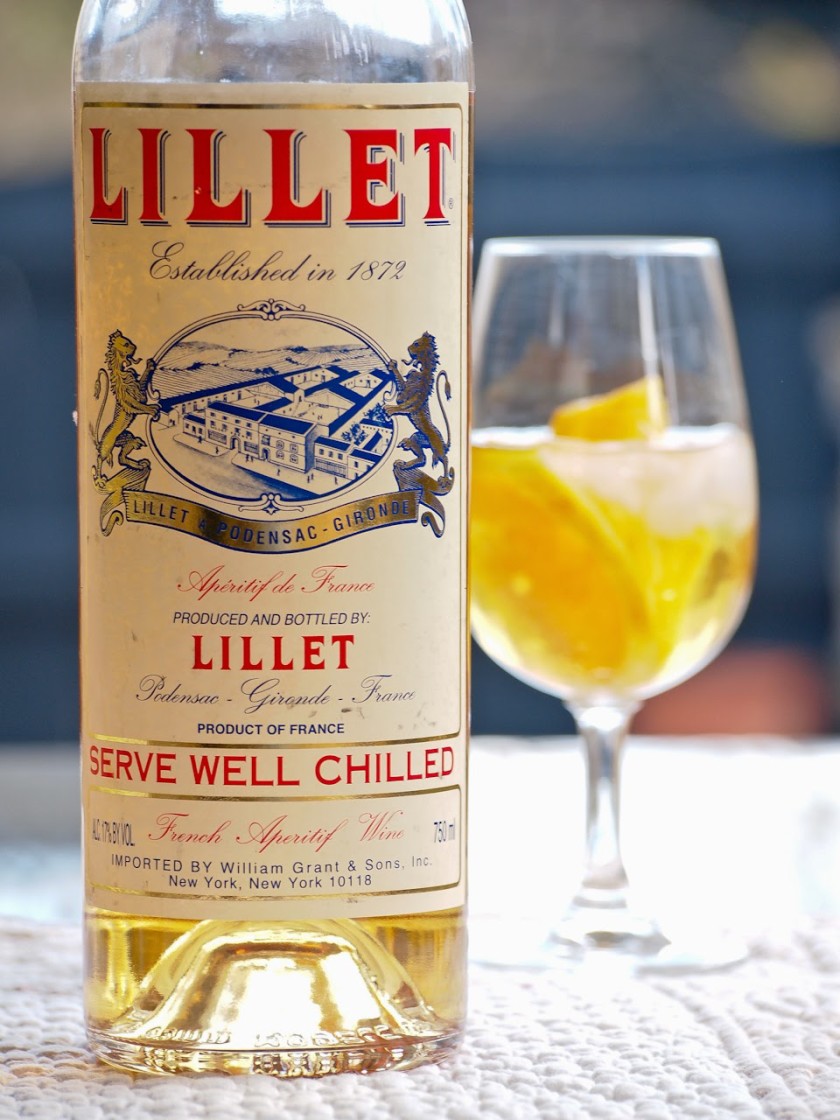
Enjoying an aperitif before dinner is a distinctly European tradition, especially popular in Provence and Italy (where it is called an aperitivo). Americans have been reluctant to embrace this practice, but this is changing in our country: bartenders are serving up the classic aperitifs to enthusiastic customers and stateside winemakers and distillers are producing the stuff that define these drinks, namely fortified wines and spirits imbued with herbs and botanicals.
So, what is an aperitif? Literally, the word comes from the Latin aperire which means “to open.” It is served prior to a meal (usually dinner) and its role is to “open the appetite.” It is typically light and refreshing, dry, and containing just a moderate amount of alcohol (compared to the typical cocktail). If there is any sweetness, it is balanced by sufficient bitterness so as to whet the appetite (not dull it).
As Sarah Karnasiewicz writes in “American Aperitifs: New Takes on Old-School Drinks” in The Wall Street Journal (7/12/2013), “[An aperitif] should stir your appetite, your senses, even your memory.”
Dry white wine and champagne are considered aperitifs but, as Jim Nelson reflects in “Spirits: The Art of the Aperitif” (in Food and Wine, May 2002), the real aperitifs “[have] a little more flair, more flavor, more color and—yes—a bit more sophistication.” He cites Lillet (and Campari) as the quintessential aperitif, “drinks that go (mostly) by one name and almost always are concocted from secret herbal recipes.”
Lillet (pronounced “lee-LAY”*) is made from a recipe of 85% Bordeaux wines and 15% citrus and Peruvian cinchona bark (quinine) liqueurs, the specifics of which have remained secret to all but a handful of people since its inception in 1872.
The brothers began their distilling career by making a line of fruit eaux-de-vies. They lived in the perfect location for this endeavor: 19th-century Bordeaux, in addition to being a major wine region, was an important…
French port and the main harbor for imports from the Caribbean, including exotic fruits, spices, and herbs, thus providing the brothers with a steady source of ingredients for their fruit brandies.
The brothers developed the recipe for what would become Bordeaux’s legendary aperitif a few years after opening their distillery. They took advantage of the local wines (Sauvignon Blanc and especially Semillon renowned for its role in Sauternes) and combined them with citrus liqueurs they made from the peels of sweet oranges from Valencia, Spain; green oranges from Tunisia or Morocco; bitter oranges from Haiti; and cinchona bark (or quinine) from the Peruvian Andes**. The blending, fortification, and ageing process (in oak barrels for several months) is, according to the Lillet website, “handled as attentively as any great Bordeaux wine.”
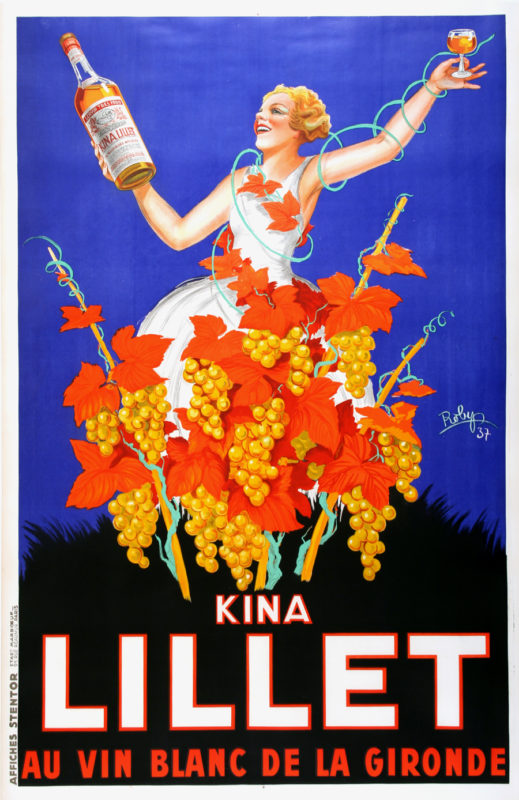 |
| Lillet Poster from 1937 |
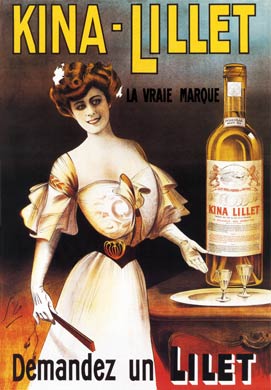 |
| Lillet Poster from 1906 |
The bitterness of the quinine counters the sweetness of the oranges and allowed the brothers to tout the beneficial effects of their potion—it was considered an antidote for malaria well into the 20th century. (My husband Towny took quinine pills while living in Liberia and the Central African Republic in the early 1970s.) In fact, the original name of the product was Kina Lillet; the “Kina” part was dropped from the name by the middle of the 20th century although it continued to be called by its original name, most famously by James Bond who, in Ian Fleming’s 1953 Casino Royale, ordered a “Kina Lillet martini.”***
I have not tried the Lillet Rosé yet—New Hampshire is not the center of gastronomy—but I’m on the trail of a bottle now. I can report that David Lebowitz (who also just wrote about Lillet) was not crazy about this version, preferring the classic white concoction that I am recommending today. I have not found the réserves either (neither did Lebowitz—and he’s in Paris!). The Lillet rouge, in my opinion, is really good for Sangria.
So, if you want to be a hit with the host, forget the Easter Lily and bring along a bottle of Lillet Blanc. It is a festive way to begin a leisurely meal (and to ensure an invitation for next year!). And, the next time you’re in Provence and the waiter asks if you’d like an aperitif, you won’t have that dear-in-the-headlights look.
___________
Notes:
*You might expect “Lillet” to be pronounced “lee-YAY” since “ll” in the center of a word is typically pronounced with a hard “y” in French. Not so with Lillet. The family, who should know how their name is pronounced, had to go so far as to change the spelling of their product—in France!—to “Lilet.” When people accepted the family’s pronunciation, they changed it back to the original spelling. (Also make sure not to inadvertently ask for a glass of milk….”le lait” is just a vowel off!)
**”Quinquina” is the French word for the cinchona (the bark from which the quinine comes). Pronounced “Ka Kina,” it’s not so strange that the original name was “Kina Lillet.”
***Bond named this drink the “Vesper” and instructs the bartender how to make it: “Three measures of Gordon’s, one of vodka, half a measure of Kina Lillet.” See Daniel Craig in the 2006 movie version!

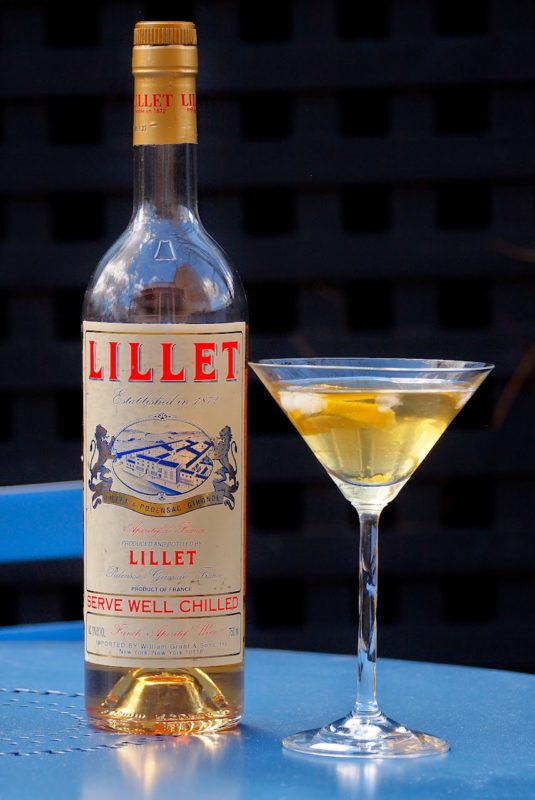
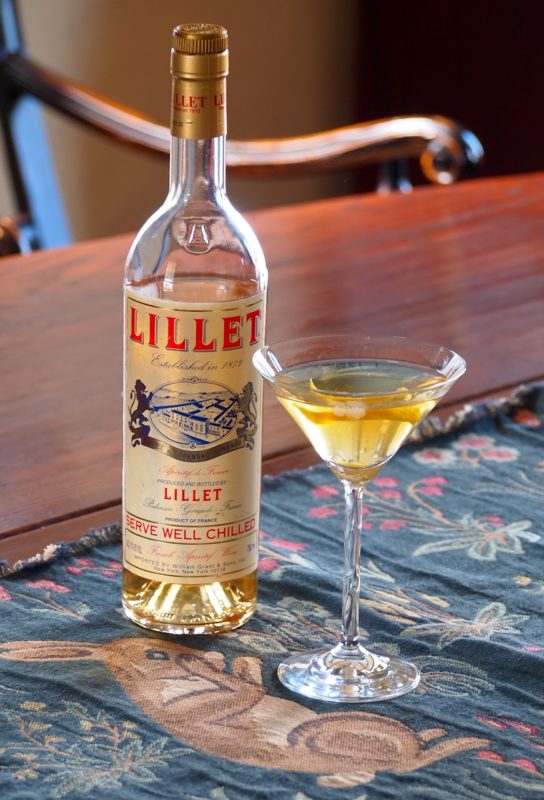





Your post made me look into the back of my hooch cabinet to pull out the bottle of Lillet. About three-quarters fill, I am fearful that it may have turned! The color is no longer light, but an amber. Do you think that is possible? It tastes okay, but I can't remember if it tastes like Lillet or not!! Some foodie I am! Thanks for the history and also for the info on the upgrades. I think I will stick to the classic!
Did you know that Lillet is also Hannibal Lecter's preferred aperitif? To whet his palate for fava beans and chianti, I presume.
I love having a Lillet as an aperitif and have a bottle chilled in my refrigerator now. I think I will stick with the original…as you say, it is difficult to find unusual products here in New Hampshire.
It was the perfect Lillet evening a few nights ago–beautiful lighting, colorful sky, and warm air. Living in the same state, I hope we get to enjoy some together some evening!
Henry, I did not know that. Lillet seems too light and elegant for his tastes!
Aged Lillet?! As a fortified wine, I would think it would darker over time but be fine. I would like to try it. Did you enjoy it?
That would indeed be lovely!
I am going to work on that…when I return from Provence in July!